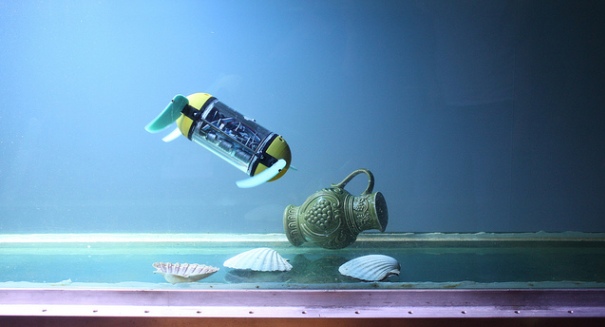
Researchers have built a robot which looks and moves like a sea turtle and which is designed for the research and exploration of deep sea shipwrecks.
Using animal forms and movements for robotic inspiration seems to be a major trend for the 2013 technology landscape. Just this week, reports of a levitating robot and its jellyfish like movements went viral, while a robotics firm called Boston Dynamics grabbed headlines earlier this fall for an untethered robot which resembles a wildcat and can run at an impressive 16 miles per hour.
Now, researchers have built a robot which looks and moves like a sea turtle and which is designed for the research and exploration of deep sea shipwrecks. According to an article recently published by Discovery.com, the new robot – currently called U-CAT – was developed by a researcher at the Tallinn University of Technology in Estonia.
The researcher, named Taavi Salumäe, works for the university’s Centre for Biorobotics and believes that a robot inspired by a turtle fits the bill perfectly for deep-dive shipwreck exploration. Where most underwater robots have limited capability for flexible movement – due to propellers that only really allow them to move forward or backward – the U-CAT robot changes the game with mechanical flippers that allow for slower, steadier, and more flexible movement in all manner of directions. The flippers allow the robot to hover, spin around, and move forward or backward. In other words, the U-CAT device is much more responsive and much easier to control than the average underwater robot – a key innovation for exploring the dark and cramped spaces of sunken ships.
The U-CAT’s propensity for meticulous movement isn’t the only quality that makes its turtle-like design ideal for exploring shipwrecks. Salumäe also said that the propellers used by traditional underwater robots are not ideal because they disturb the water and kick up silt and other debris from the ocean floor. In a shipwreck, such debris disturbances can lead to a major reduction in visibility. Since the low-light conditions of shipwrecks already make them difficult to explore, any further decrease in visibility could ruin an otherwise productive research project.
The U-CAT is also small and able to operate without a tether, which makes it perfect for accessing the nooks and crannies of sunken ships. Quite simply, the robot can go places where other exploratory craft cannot, using its camera to record footage of unexplored areas. Salumäe also says the robot should be cheap to produce and operate – a major plus considering how easy it is for robots to get lost or stuck when exploring a shipwreck.
Leave a Reply